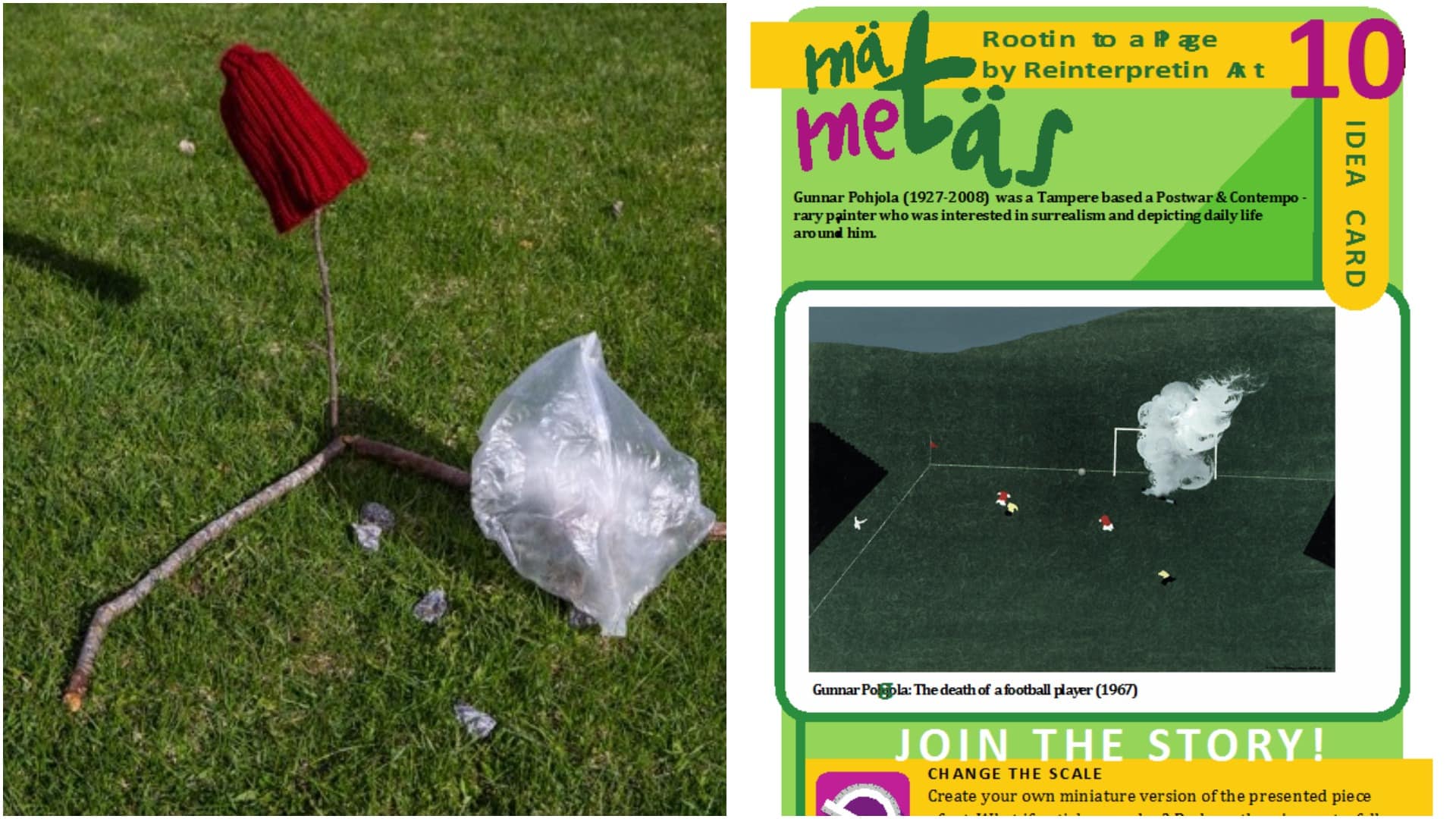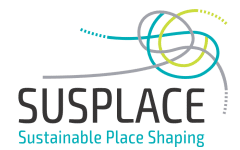During the SUSPLACE Final Event, I hosted a practice session called ‘Rooting to a Place by Reinterpreting Art’. In this blog, I reflect upon the method I used and present the visual outcomes of the workshop.
The method, called Mätäsmetäs (includes play of language in Finnish that in unfortunately untranslatable), was based on a project that took place in 2014 in three recreational forest areas. The main idea of the project was to reinterpret forest themed art in literature in the forest areas. The core idea was to sensitize participants to see the forest in the way artists have seen it in different eras and, through photographic reinterpretations, see the surrounding in a new light and from new perspective. The aim was to enhance emotional bonding to these hiking areas and boost place attachment. You can read more here about the original project and its the results in this publication (appendix in English at the end), and watch the short presentation video (subtitles in English available) or the longer reflective video .
For #SUSPLACE2019, a new adaptation – MäätäsManses (sorry, another trying-to-be-clever pun in Finnish ) – was created: this time the sources were pieces of art and culture related to the history of Tampere. This practice session managed to gain five participants, so two enthusiastic teams were set out to discover Tampere through interpreting the art.
The feedback of the workshop was very encouraging for developing it further for different purposes. As one team stated:
“The workshop was very interesting. This method is a great way to discover different dimensions of local culture through specific places. It requires a particular look at the different elements that make up the places where interpretations are made. It also allowed us to exchange with the inhabitants of Tampere. It is an original way to exchange with another person about a place by essentially mobilizing and exchanging our imaginations, far from the very ‘rational’ discourse. It has undoubtedly changed the way we look at what surrounds us.”
The participants also experienced that this activity enhanced their use of imagination and creativity. Some quotes:
“If you are not finding object to replace or person, extrapolation and humor is coming.”
“We imagined a staging of the feather to find the different physical elements of the image (grass, earth, water). It was a lot of fun. It required us to mobilize our imagination and brought us a positive emotion.”
“I liked very much, and it make me think about the hidden sense of objects, we interacted also with reinterpretation of existing road blocks or graffiti on walls.”
Let’s now enjoy the visual results of the workshop together with the feedback from the teams. I am sure you are going to love these as much as I do!
The reinterpretations and the reflections done by the teams show obvious evidence that even within one-hour time frame it is possible to find new perspectives to a place and playfully interacting with a location when encouraged and given an alibi to do so. Art-based intervention gives a great excuse to do so and the full potential of this kind of methodology is yet to be discovered.
Hugo Simberg: The Wounded Angel (1906), Fresco at the Tampere Cathedral
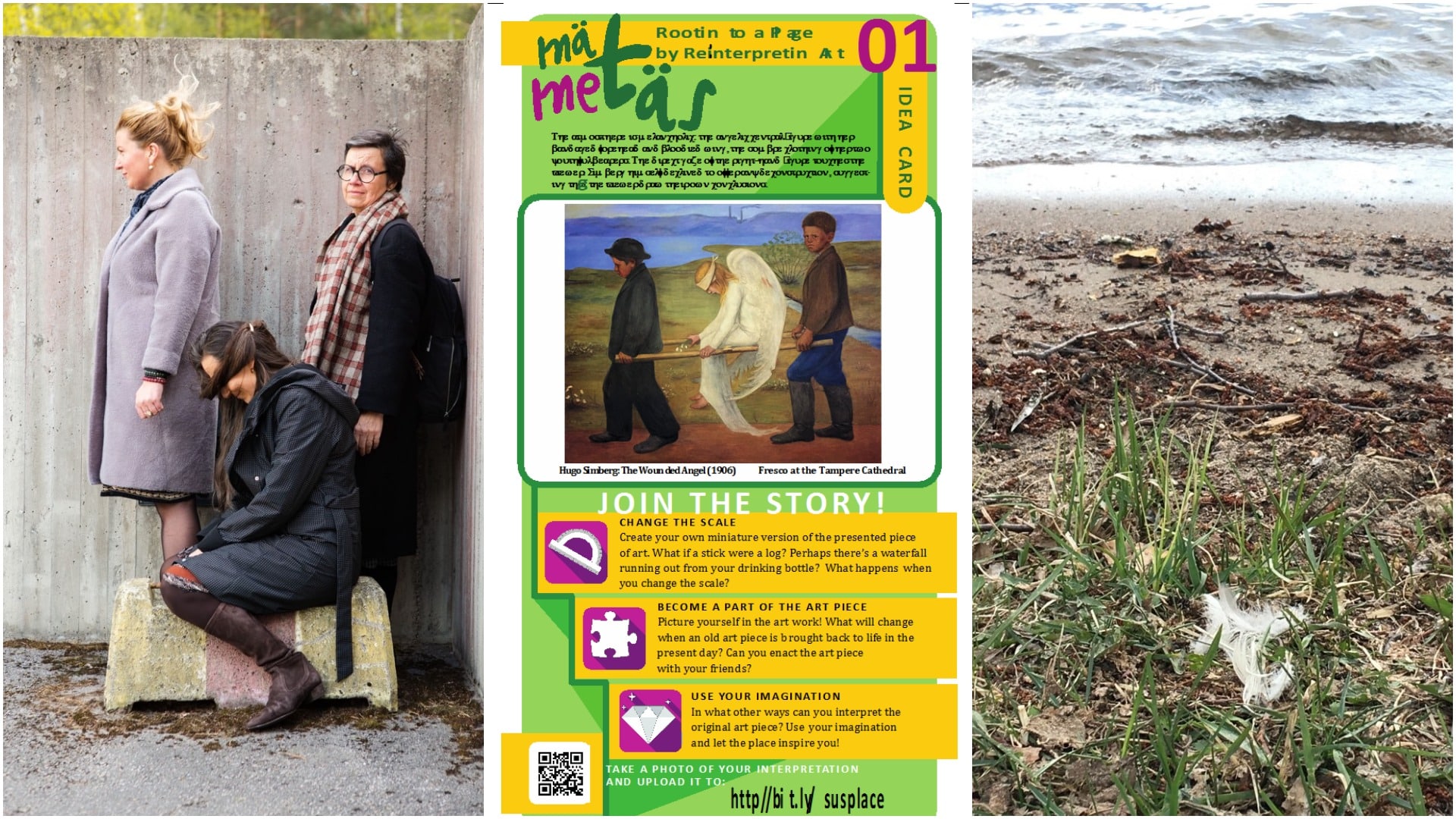
“This idea was somehow suggested by the physical environment. It was when we saw a white feather on the ground that the idea of this interpretation emerged. Looking at the surroundings we found ourselves in a place that represented the same elements that appear on the original painting. So, it can be said that we placed ourselves inside the painting, in the same place where the wounded angel just passed by.”
“Exploring the area to find the feathers and locate them in a place that reproduced what is shown in the picture allow us to take a closer look at the natural elements of the area, which was great!”
Karvakuonot and the Manor of Käpälämäki (2001)
Karvakuonot was a famous TV programme for 40 years produced in Tampere.
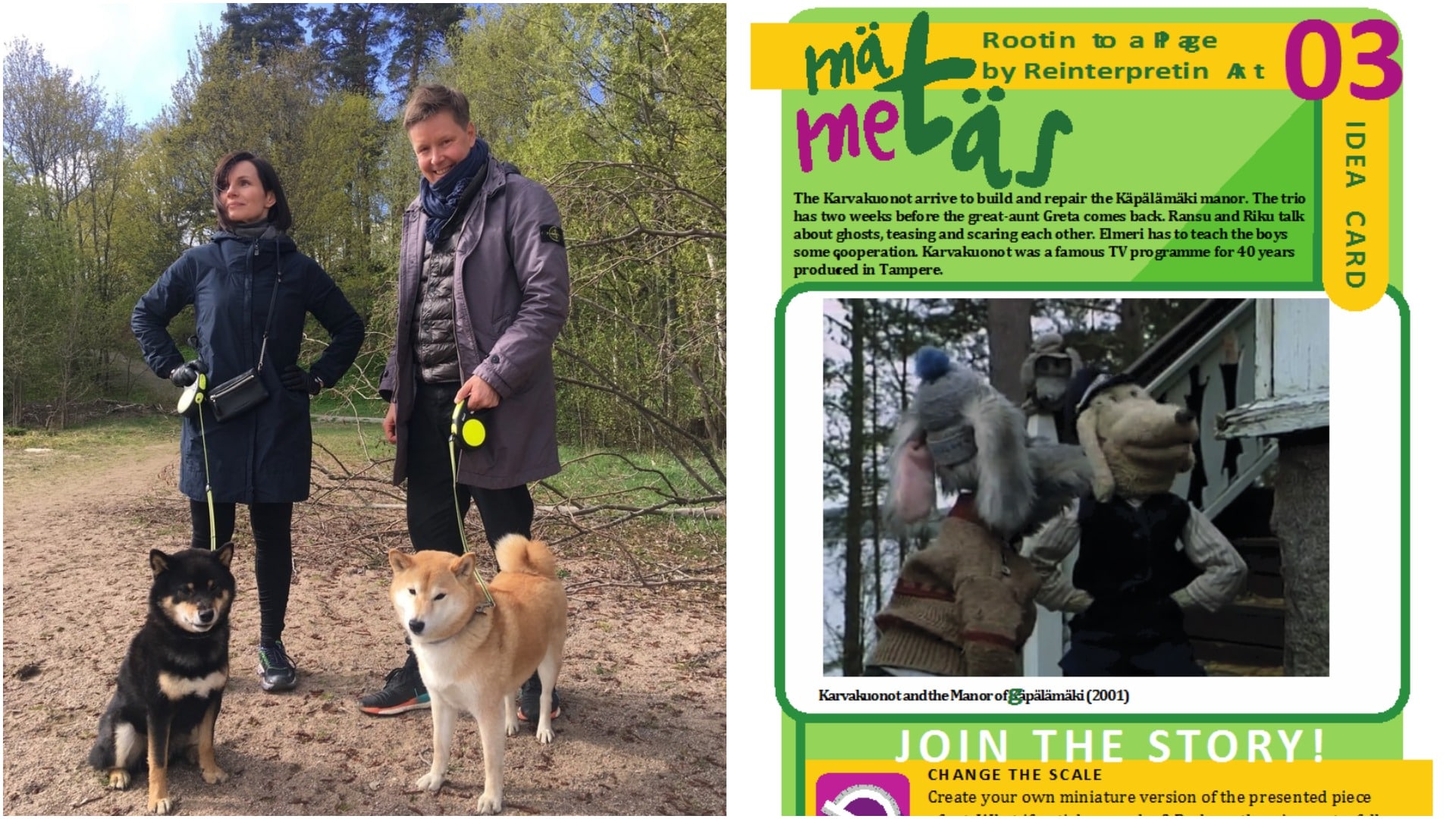
“This method allowed us to get in touch with people living there. This method has therefore changed less the way we see the place: it has allowed us to exchange with its inhabitants. They told us about the series shown in the picture but also about their dog that we then took a picture of to interpret the picture. The time we spent with that couple (and their dogs) allowed us to get in contact with the local people of Tampere, and this was a nice experience. We promised to send them the picture, which we did.”
A playful statue at the yard of Sampo Comprehensive School in Tampere by Matti Kalkamo.
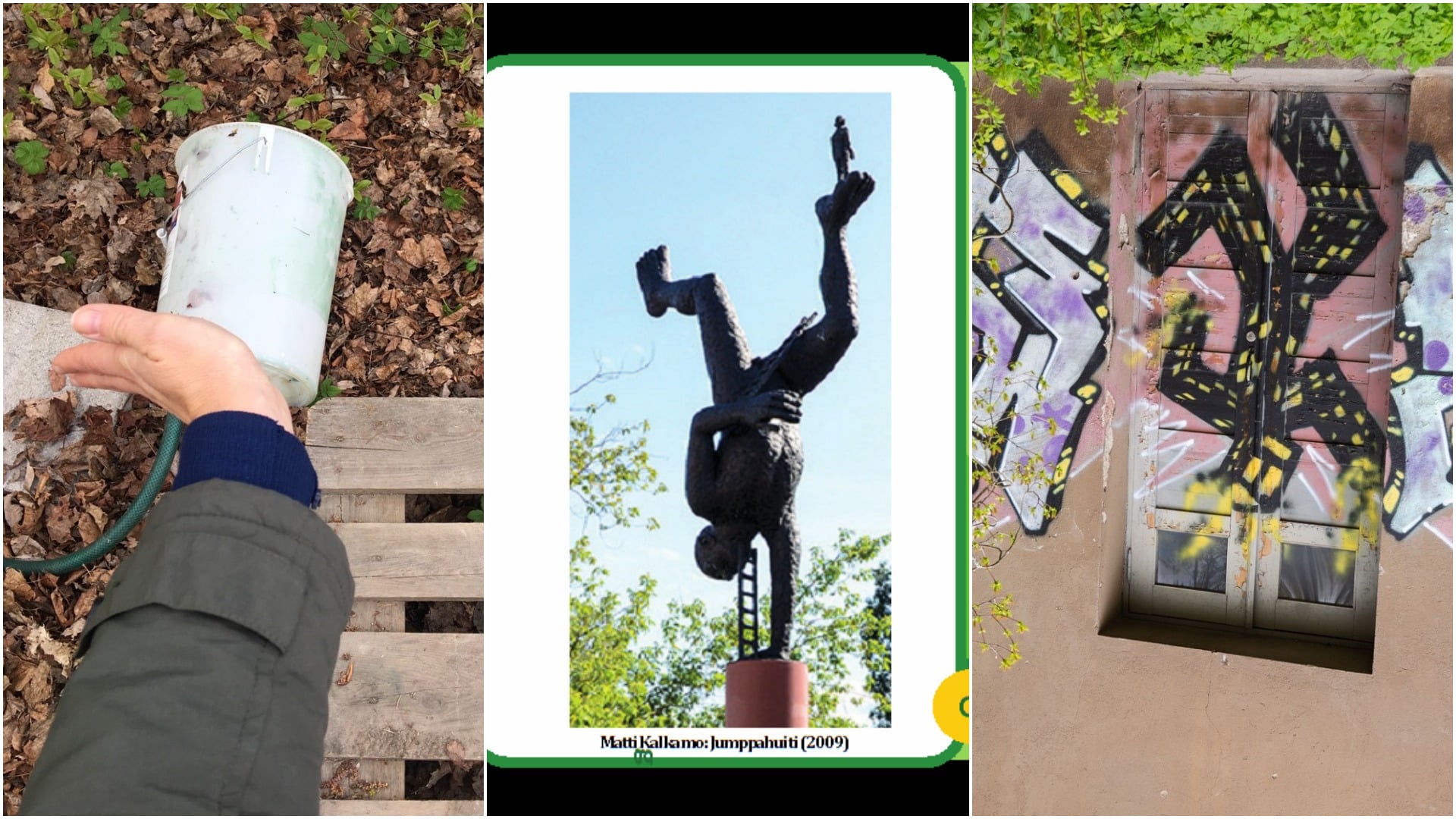
“This photo shooting forced us to look carefully at the different elements of this place. We looked at how these different elements could correspond to those in the image. After trying different approaches, and exploring different places that inspire us to take the picture, we decided to represent only part of the image, the hand with the support and the stair behind. Looking for the best location, the presence of natural or artificial elements, and a good perspective to take the picture, we ended at a place in which we improvised a staging with the elements available, wood and plastic to recreate the support and the stair.”
Tiitu Takalo: Sisters 1918 (2018)
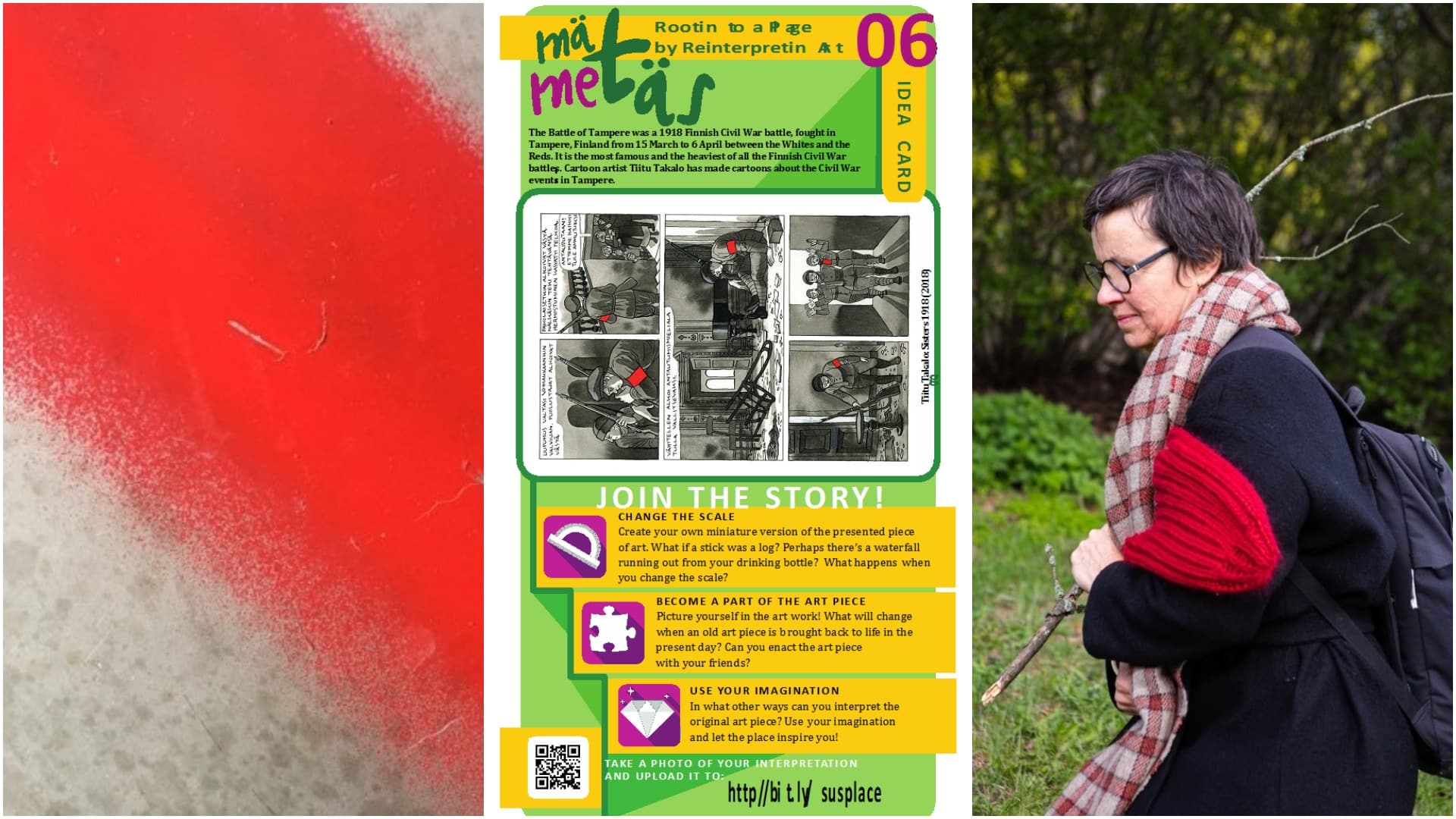
“By looking carefully at the different elements of this place, we noticed a red trace on an electrical box. With the image to be reinterpreted in mind, this simple electrical box suddenly bore the mark of the civil war… This box thus played the role of a memorial for a little moment.
“Near the forest we came across with a red graffiti (red letters) that immediately gave us the idea for this interpretation. So, this is part of that graffiti, which we zoomed in to show only a red band representing the armband of a soldier.”
Yrjö Liipola: the Monument of the Kuru Shipwreck (1939)
The most severe maritime disaster in Finnish lakes or rivers that led to the loss of 138 lives.
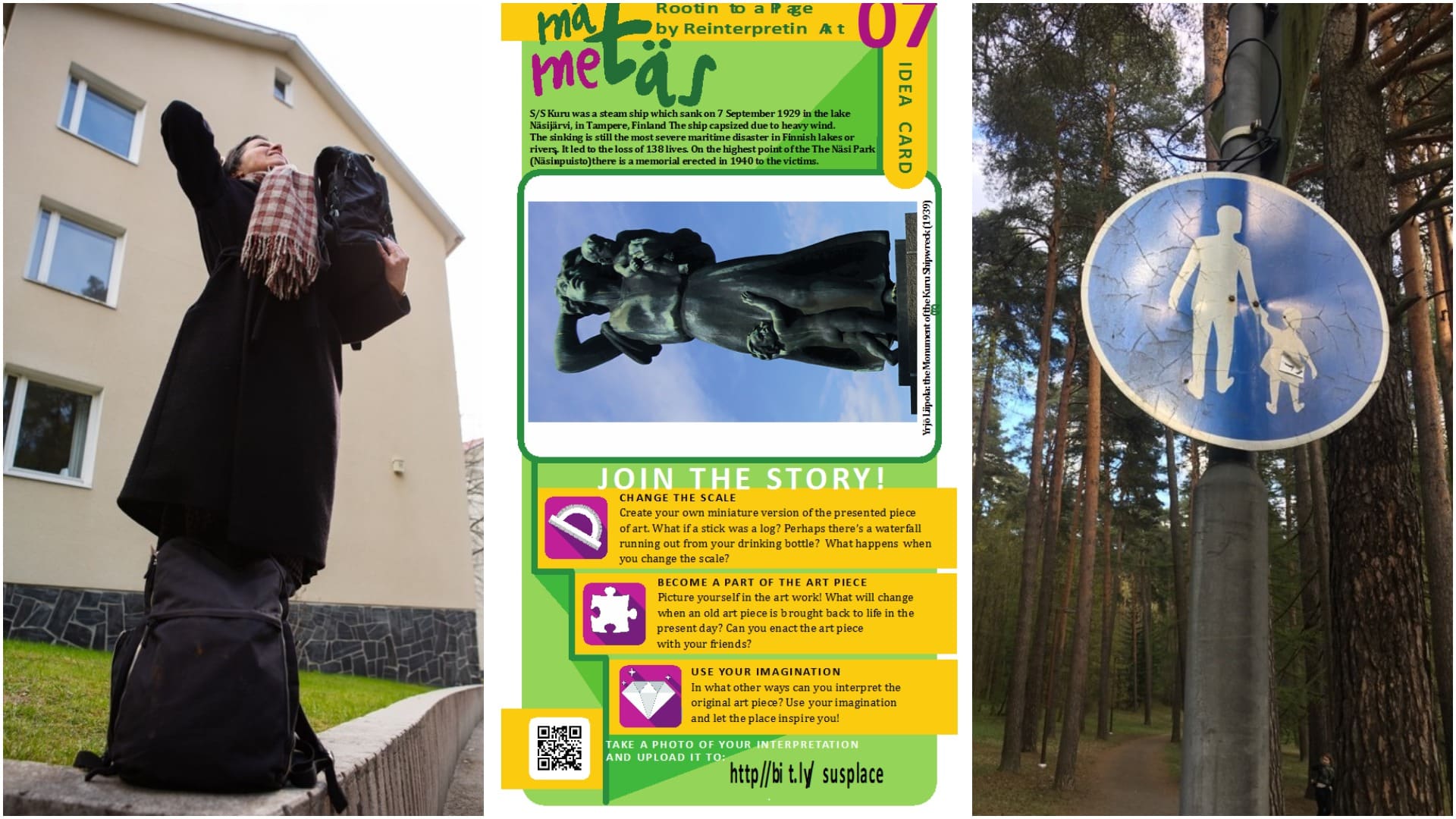
“This interpretation is more disconnected from the place where the photo was taken than the others. Our attention was specifically focused on this traffic sign as we came across with this signal and the representation of an adult with a child on the sign reminded us of the representation of statue with a mother and her children.”
Matti Kallio: The swimmer and the cryer (2018)
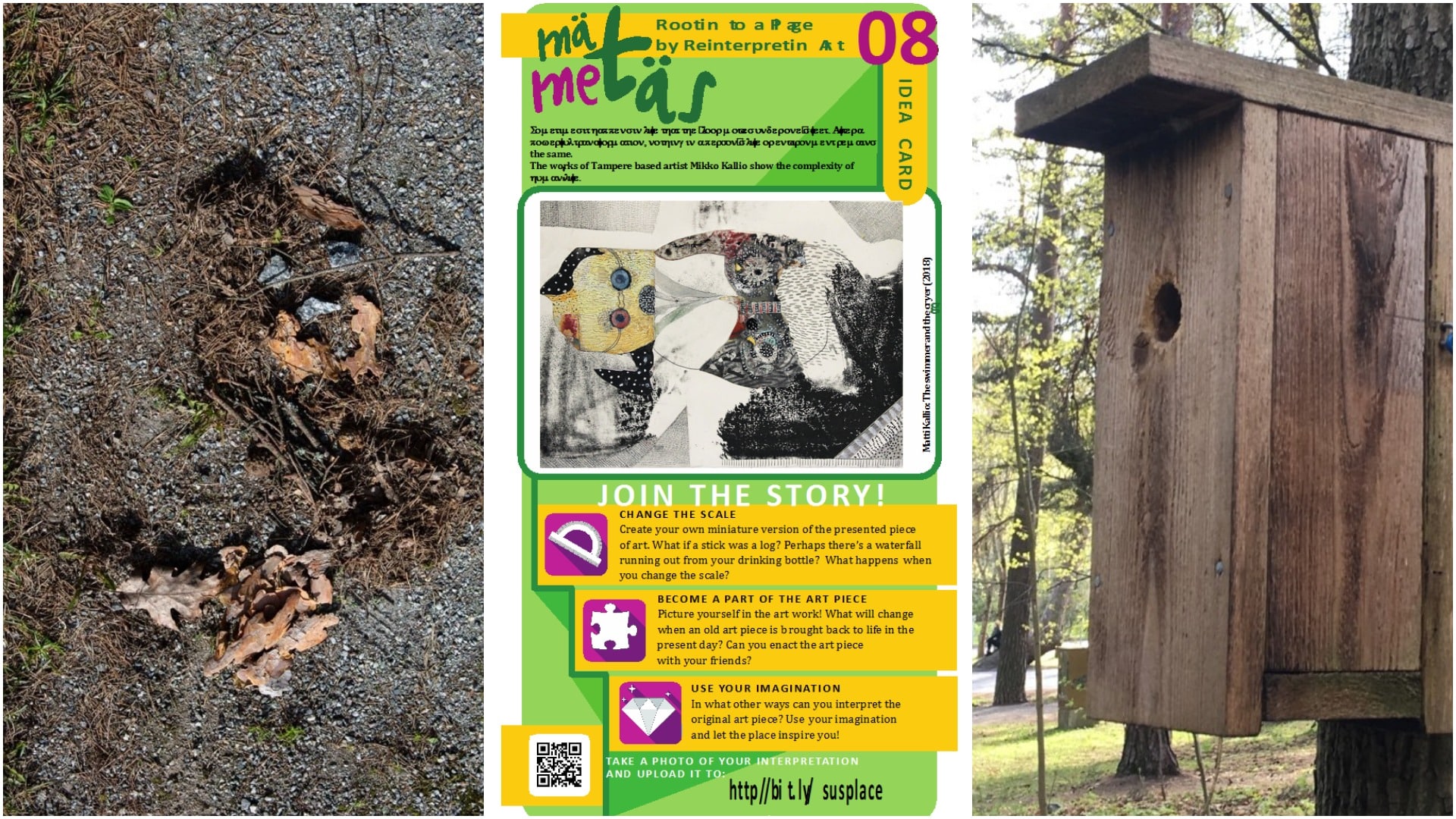
“We came across this location while looking for a place to recreate another image. The feeder called our attention, and then we realized that was something we could use to interpret the “Swimmer and Cryer”. Our way of looking at the surroundings changed, from a larger area to focus on a small element. Our idea was to show two sides of a same element, which is also illustrated in the original painting. The “swimmer and cryer” evoked us the image of a owl, so when we found this bird feeder, we associated both elements. Then, after looking closer at the feeder and, from different perspectives, we found out that we also could represent the ‘two sides’ of that element. So, taking the picture from that angle we aimed to show the two sides (or two faces) of the feeder, imitating the two faces of the swimmer/cryer.”
Wäinö Aaltonen: Eränkävijä (1929)
The Hunter (Eränkävijä) is one of the 4.5 metres (15 ft) tall bronze statues on the Hämeensilta bridge.
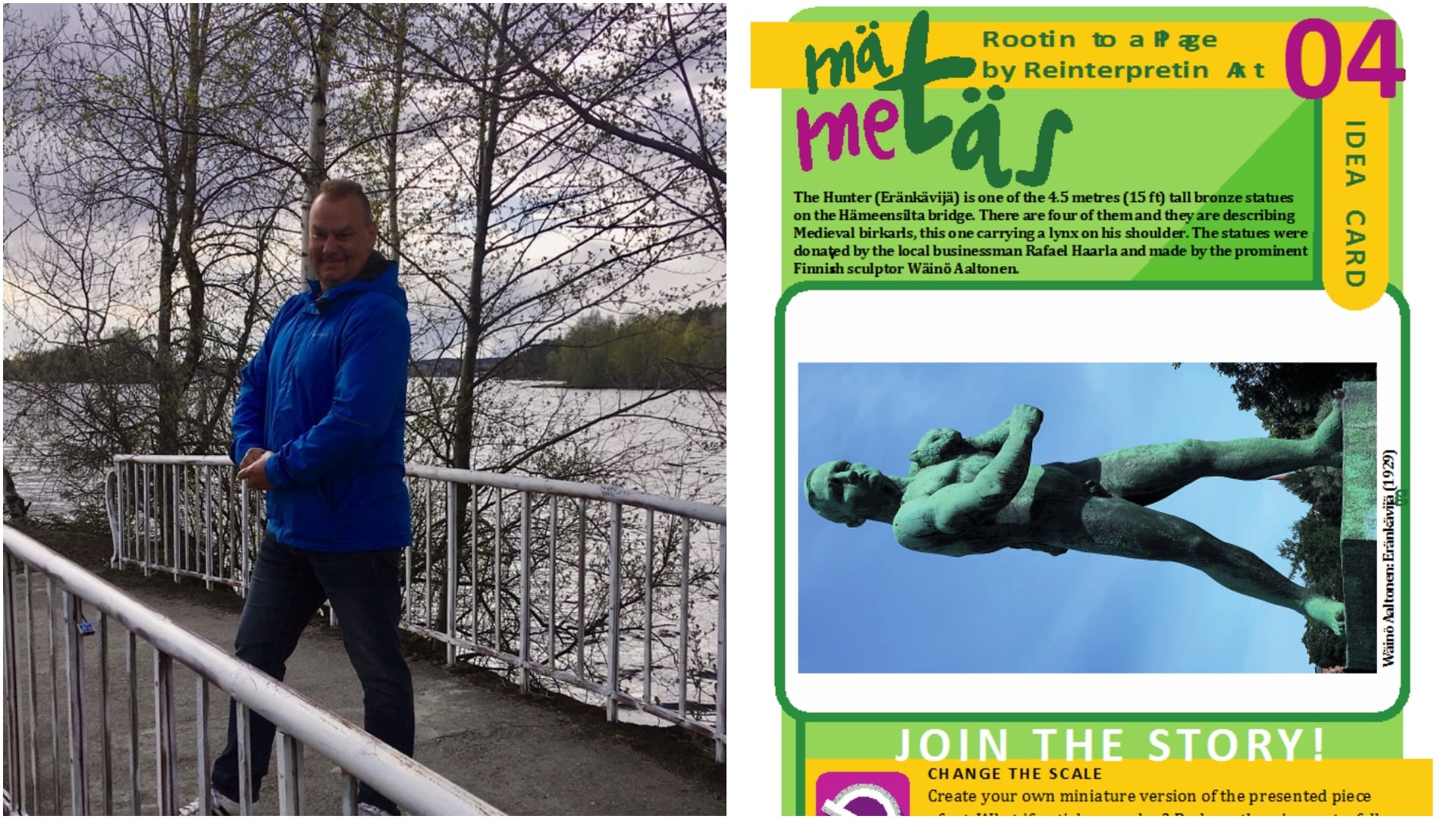
“One of the elements we wanted to keep in our interpretation of this image was the bridge. We combined the presence of a local person (representing the hunter) with the bridge in order to illustrate not only the statue itself but also its environment (displaced from the city to a natural environment). During our discussion with the person who posed for the photo, he informed us that the statue was no longer in place because of the work in progress at Tampere. “
Gunnar Pohjola (1927-2008)
Gunnar Pohjola was a Tampere based Postwar & Contemporary painter who was interested in surrealism and depicting daily life around him.